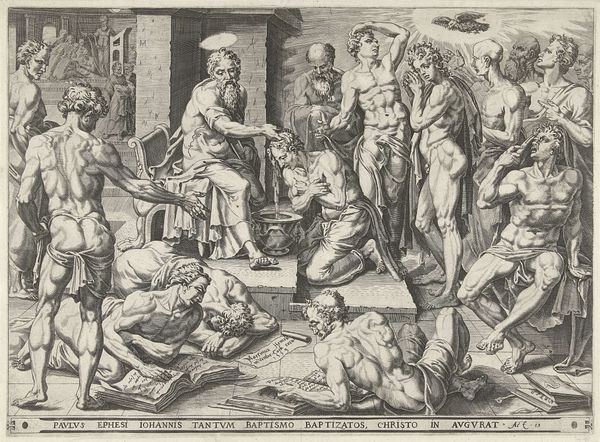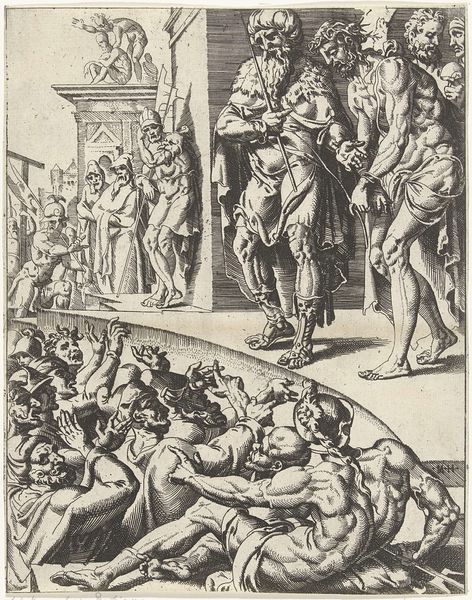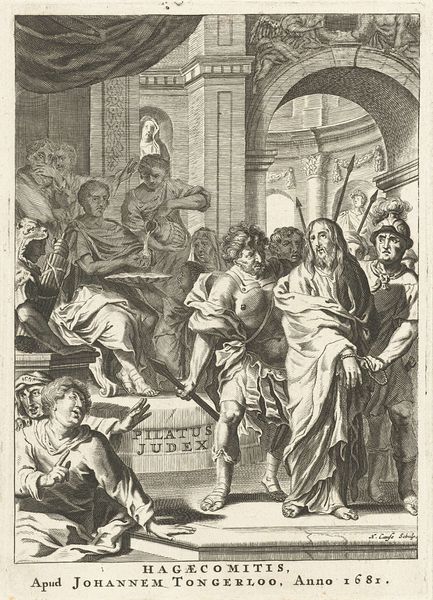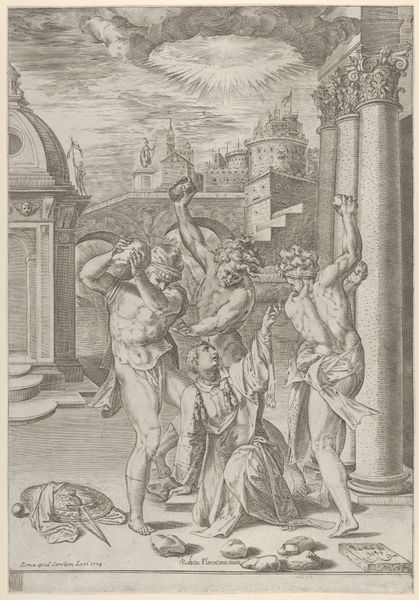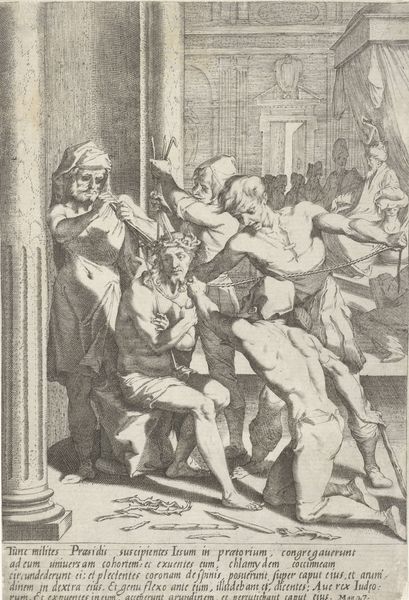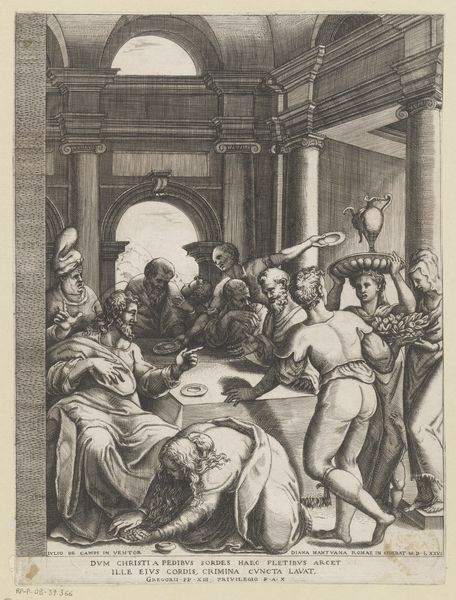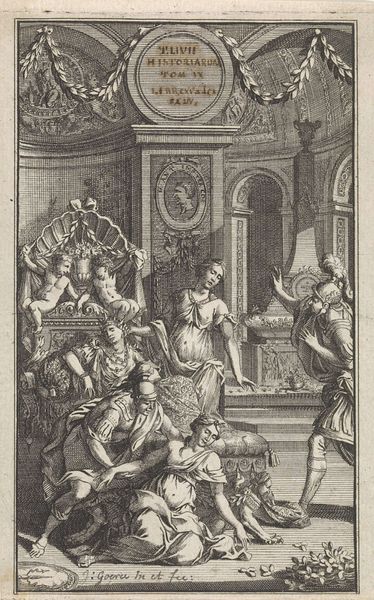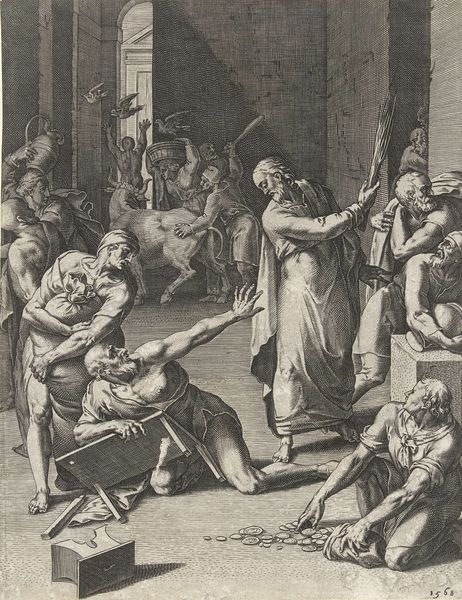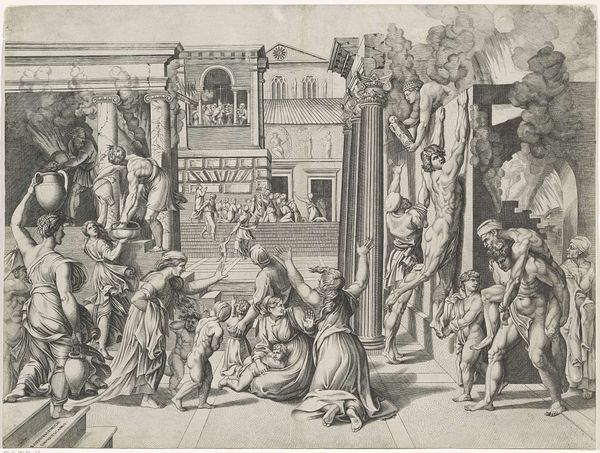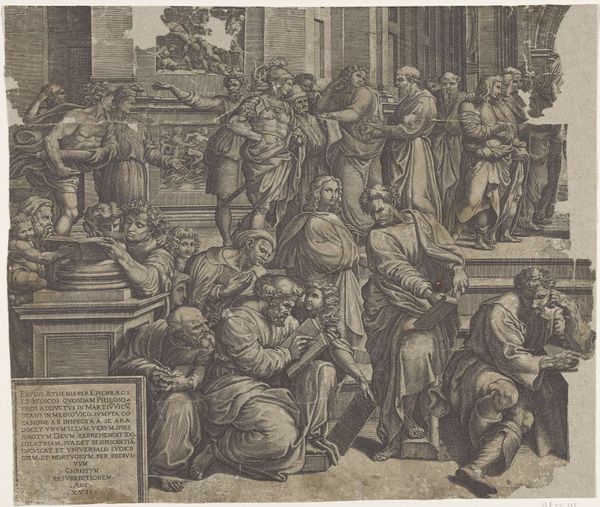
print, engraving
# print
#
figuration
#
line
#
history-painting
#
northern-renaissance
#
engraving
#
realism
Dimensions: height 248 mm, width 204 mm
Copyright: Rijks Museum: Open Domain
Curator: Look at this print, made around 1580 by Johann Sadeler I. It’s called "The Beheading of James the Greater," and it's rendered in that very precise, almost obsessively detailed engraving style typical of the Northern Renaissance. My first thought is “dramatic contrast”—lots of black ink defining incredibly tense bodies. Editor: Yes, the contrast definitely amplifies the gruesomeness, doesn't it? The composition is brilliant too. It leads your eye right from the crowd gathered in the foreground toward the central act of beheading—almost a tunnel of horror. There’s an unflinching quality that pulls you right into the spectacle of martyrdom. Curator: Precisely. Notice how Sadeler has positioned Herod there on the porch. He seems utterly unmoved by the events unfolding, reinforcing the power dynamics at play. You get this very clear sense of calculated cruelty. James' martyrdom becomes almost a political move in this staging. The sword hovers as an axe and the crowd seems restless... it's unsettling and realistic at once. Editor: The sword's position indeed amplifies its weight as an instrument of authority. Historically, beheadings symbolize not just death, but a denial of dignity. Think of all the images through time, it becomes a motif. Sadeler, though, gives a brutal, yet, somehow, classical re-imagining of the Saint. The men look like sculptures, muscular like Gods in the Greek era... How interesting is that? Curator: Yes, and to use the Northern Renaissance for a history painting and set the whole scene in what looks like some twisted version of the Roman forum... It all becomes this potent stew of religion, power, and almost casual violence, served up with that characteristically northern precision. It also shows this fascinating dialogue between classical forms and the kind of gothic drama characteristic of Northern Europe at that moment. It is interesting that the scene, if you follow the scriptures, takes place in Jerusalem... And it almost becomes like an Ancient scene where we can’t see what happens because of this brutal sense of power. It's compelling but difficult, certainly a reflection of tumultuous times. Editor: Absolutely. Sadeler’s vision becomes an unforgettable meditation on sacrifice, power, and faith. This little black-and-white image contains an incredible story... It still sends shivers down my spine, even after all these years.
Comments
No comments
Be the first to comment and join the conversation on the ultimate creative platform.
